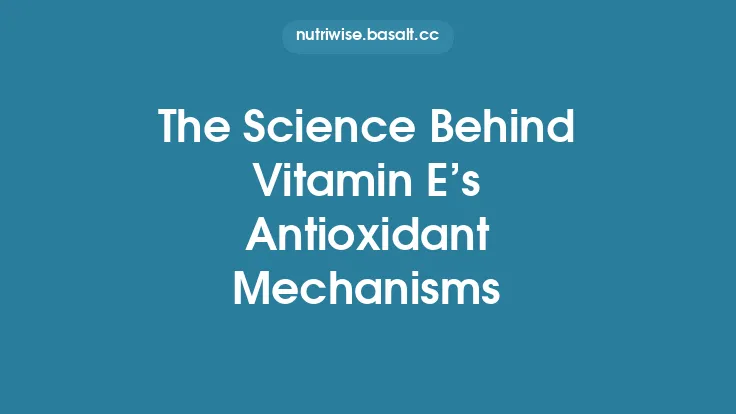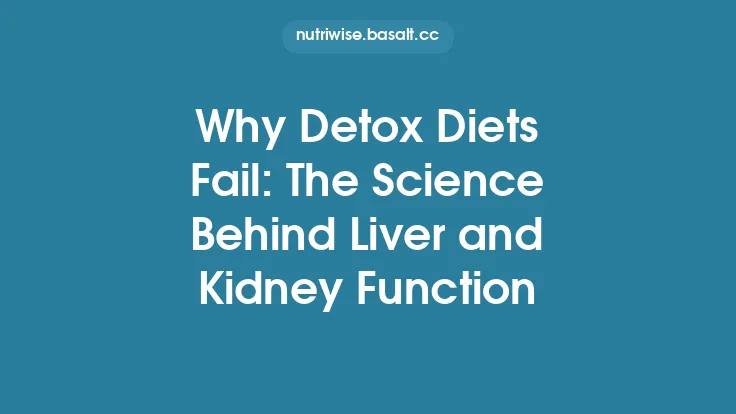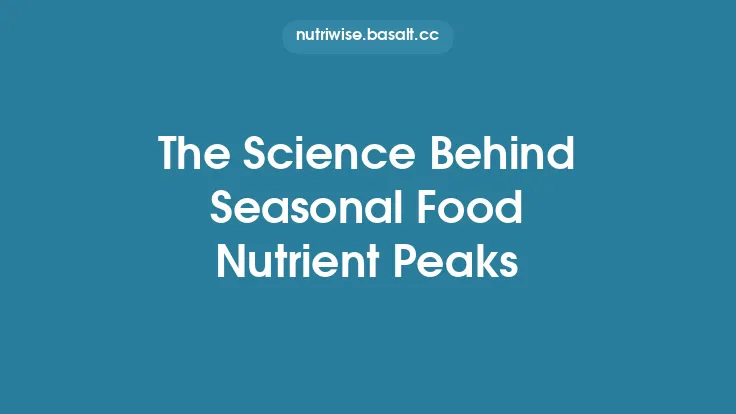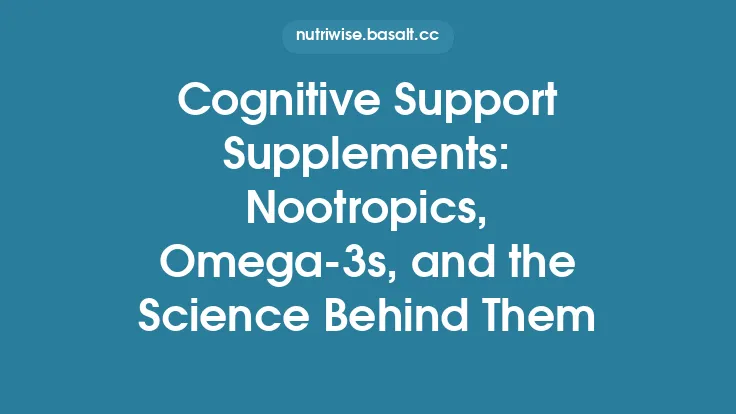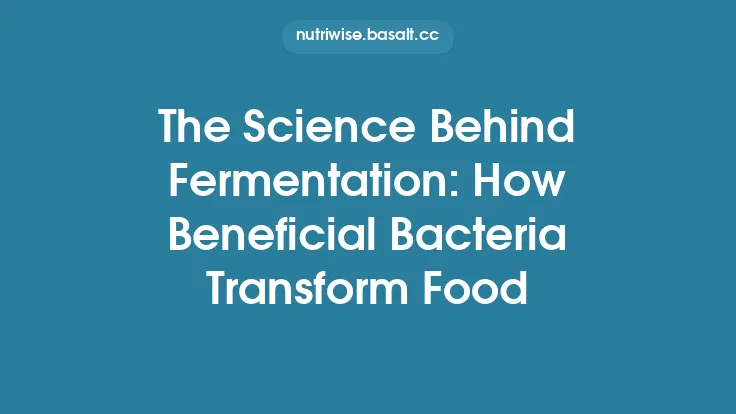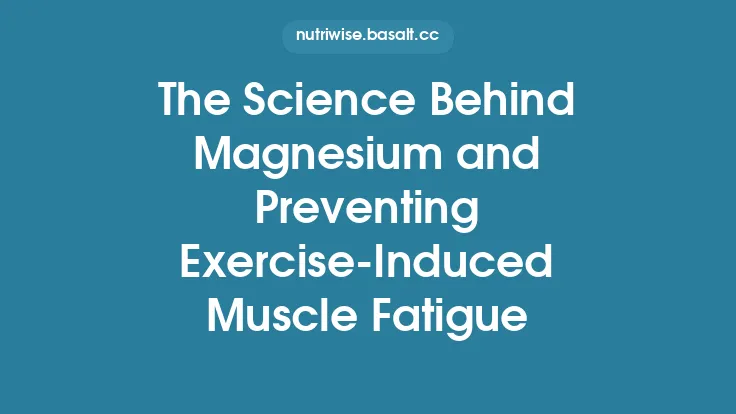Vitamin C (ascorbic acid) is one of the most studied micronutrients in biochemistry, not because it is a “miracle cure,” but because its redox chemistry is uniquely suited to protect cells from the constant barrage of reactive species generated during normal metabolism. Understanding how ascorbate functions at the molecular level provides a foundation for appreciating its role in cellular homeostasis and for designing experiments that probe oxidative processes.
Chemical Structure and Redox Potential
The antioxidant capacity of vitamin C stems from its simple, yet highly reactive, enediol structure. In its reduced form, ascorbic acid (C₆H₈O₆), the molecule contains a 2,3‑enediol moiety adjacent to a lactone ring. This arrangement allows the two hydroxyl groups to donate electrons (or hydrogen atoms) sequentially:
- First electron transfer – Ascorbate (the mono‑anion formed at physiological pH) loses one electron to become the ascorbyl radical (Asc•).
- Second electron transfer – A second oxidation step converts Asc• into dehydroascorbic acid (DHA), a fully oxidized, but still biologically active, form.
The standard reduction potential of the ascorbate/ascorbyl radical couple (E°′ ≈ +0.28 V) is sufficiently low to allow ascorbate to reduce many biologically relevant radicals (e.g., superoxide, hydroxyl, peroxyl) without itself becoming a damaging oxidant. Moreover, the ascorbyl radical is relatively stable; it does not readily propagate chain reactions, which is a key distinction from many other free radicals.
Electron Donation and Radical Scavenging
When a reactive oxygen species (ROS) such as a peroxyl radical (ROO•) encounters ascorbate, the following generic reaction occurs:
ROO• + AscH⁻ → ROOH + Asc•
The peroxyl radical is reduced to a non‑radical hydroperoxide (ROOH), while ascorbate is oxidized to the ascorbyl radical. Because the ascorbyl radical is resonance‑stabilized, it does not readily react with molecular oxygen to generate new radicals. This “terminating” effect halts the propagation phase of lipid peroxidation and other chain‑reaction processes.
In aqueous environments, ascorbate can also directly scavenge hydroxyl radicals (•OH) and singlet oxygen (^1O₂) through hydrogen atom transfer (HAT) mechanisms. The rate constants for these reactions are among the highest recorded for biological antioxidants, underscoring ascorbate’s efficiency in neutralizing the most reactive species.
Ascorbate in Enzymatic Antioxidant Systems
Beyond its direct radical‑quenching ability, ascorbate serves as a cofactor for several antioxidant enzymes, most notably:
- Ascorbate peroxidase (APX) – Predominant in plant chloroplasts and also present in animal mitochondria, APX catalyzes the reduction of hydrogen peroxide (H₂O₂) to water using ascorbate as the electron donor:
H₂O₂ + AscH⁻ → 2 H₂O + Asc•
- Monodehydroascorbate reductase (MDHAR) – Regenerates ascorbate from the ascorbyl radical using NAD(P)H, thereby linking ascorbate turnover to the cellular NAD(P)H pool.
- Dehydroascorbate reductase (DHAR) – Reduces DHA back to ascorbate using reduced glutathione (GSH) as the electron source, integrating ascorbate into the glutathione redox cycle.
These enzymatic pathways ensure that ascorbate can continuously recycle, maintaining a high intracellular pool of the reduced form even under oxidative challenge.
The Ascorbate–Glutathione Cycle
A central hub of intracellular redox balance is the ascorbate–glutathione cycle. The sequence proceeds as follows:
- Oxidation of ascorbate to the ascorbyl radical (by scavenging ROS) or to DHA (by two‑electron oxidation).
- Reduction of DHA back to ascorbate by DHAR, consuming GSH and producing glutathione disulfide (GSSG).
- Regeneration of GSH from GSSG by glutathione reductase (GR) using NADPH.
This tightly coupled system allows the cell to channel electrons from NADPH (the primary reducing equivalent) through glutathione to ascorbate, and ultimately to neutralize ROS. The cycle’s efficiency is reflected in the low steady‑state concentrations of DHA and Asc• observed in healthy cells.
Metal Ion Chelation and Prevention of the Fenton Reaction
Transition metals such as iron (Fe) and copper (Cu) can catalyze the Fenton reaction, converting H₂O₂ into the highly reactive hydroxyl radical:
Fe²⁺ + H₂O₂ → Fe³⁺ + •OH + OH⁻
Ascorbate can bind Fe³⁺ and Cu²⁺, forming relatively stable complexes that reduce the free metal ion concentration. Moreover, the reduction of Fe³⁺ to Fe²⁺ by ascorbate is followed by rapid re‑oxidation in the presence of oxygen, a process that can paradoxically generate ROS. However, within the controlled environment of the cell, ascorbate’s chelation and its participation in the ascorbate peroxidase pathway together limit the net production of hydroxyl radicals. This dual role—metal sequestration and enzymatic detoxification—helps to mitigate metal‑catalyzed oxidative damage.
pH‑Dependent Behavior and Cellular Compartmentalization
The ionization state of ascorbate is pH‑dependent. At physiological pH (~7.4), the predominant species is the mono‑anion AscH⁻, which exhibits optimal reactivity toward ROS. In more acidic compartments (e.g., lysosomes, pH ≈ 5), the fully protonated form (AscH₂) becomes more prevalent, altering its redox potential and diffusion characteristics.
Compartmentalization further refines ascorbate’s antioxidant action:
- Cytosol – High concentrations of ascorbate (0.5–2 mM) provide a rapid buffer against ROS generated by glycolysis and NADPH oxidases.
- Mitochondria – Although the mitochondrial matrix contains lower ascorbate levels, transporters (e.g., SVCT2) ensure sufficient supply to counteract ROS produced by the electron transport chain.
- Nucleus – Ascorbate can enter the nucleus, where it protects DNA from oxidative lesions by scavenging radicals in close proximity to chromatin.
- Extracellular space – Secreted ascorbate contributes to the redox environment of interstitial fluids, influencing the oxidative status of extracellular matrix components.
Understanding these spatial dynamics is essential for interpreting experimental data that measure oxidative markers in different cellular fractions.
Regeneration of Ascorbate: Non‑Enzymatic Pathways
In addition to the enzymatic routes described above, ascorbate can be regenerated non‑enzymatically:
- Photoreduction – Exposure of DHA to low‑intensity visible light in the presence of suitable electron donors (e.g., NADH) can revert DHA to ascorbate.
- Chemical reduction – Small thiols (e.g., cysteine, mercaptoethanol) can reduce DHA, albeit less efficiently than the DHAR‑mediated pathway.
These alternative routes become relevant under experimental conditions where enzyme activity is limited or when studying ascorbate chemistry in cell‑free systems.
Influence on Redox‑Sensitive Gene Regulation
While the primary focus here is the chemical mechanism, it is worth noting that the redox state of the ascorbate pool can indirectly affect transcription factors that respond to oxidative cues. For instance, the nuclear factor erythroid 2‑related factor 2 (Nrf2) pathway is modulated by the cellular redox environment; a high reduced‑ascorbate/oxidized‑ascorbate ratio can maintain Nrf2 in its inactive cytoplasmic form, whereas oxidative stress that depletes ascorbate may promote Nrf2 nuclear translocation and the expression of antioxidant response element (ARE) genes. This feedback loop illustrates how the biochemical actions of ascorbate integrate with broader cellular signaling networks.
Summary
Vitamin C’s antioxidant prowess is rooted in its unique chemical structure, which enables rapid, two‑step electron donation without generating secondary radicals. Its ability to directly scavenge a wide spectrum of ROS, to serve as a cofactor for peroxidases, to participate in the ascorbate–glutathione cycle, and to chelate transition metals collectively equips cells with a versatile defense system. The efficiency of these mechanisms is fine‑tuned by pH, subcellular localization, and the interplay with other redox couples such as NADPH/ NADP⁺ and GSH/GSSG. By appreciating these molecular details, researchers can better design experiments that probe oxidative processes, develop more accurate models of cellular redox balance, and explore novel therapeutic strategies that harness ascorbate’s intrinsic chemistry.
